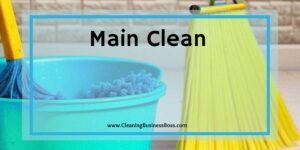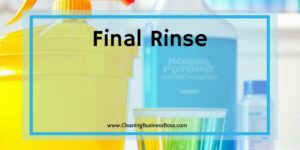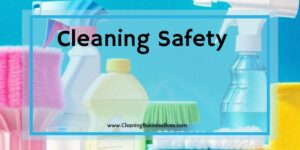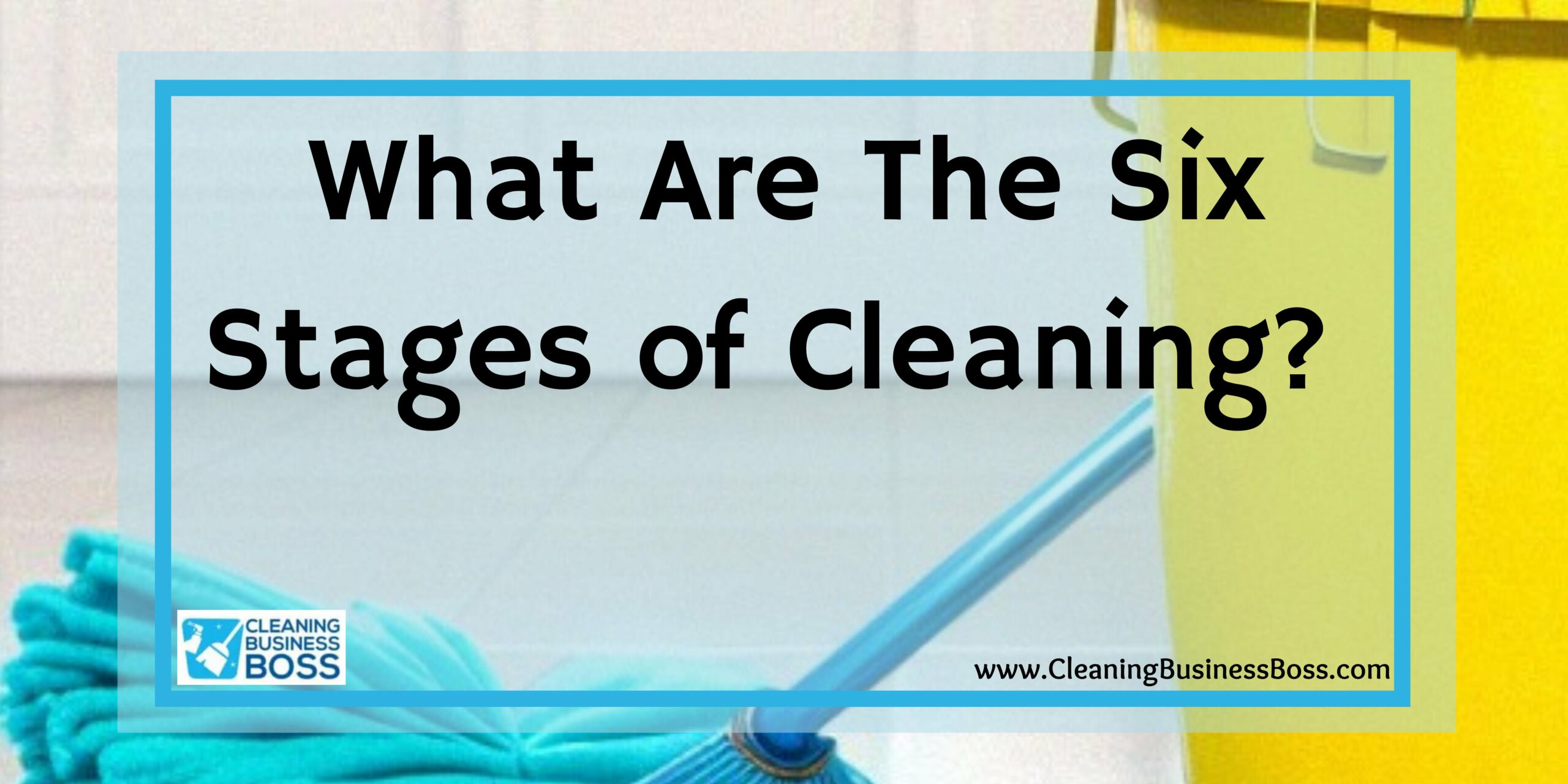Contrary to popular belief, cleaning is not about using a collection in the hopes of eliminating dust and germs. Cleaning encompasses a long and meticulous process. Hence, if you want your home, office, or business to be cleaned adequately, you need to make sure the company/person in charge of this task follows the six cleaning stages. But, what are these steps of cleaning?
According to cleaning experts, the six stages of cleaning include:
- Pre-Clean
- Main Clean
- Rinse
- Disinfection
- Final Rinse
- Drying
Below we will go over each of the six stages of cleaning mentioned above for you to have a better understanding of how thorough the cleaning process can be.
Pre-Clean
The first stage in cleaning is known as “pre-clean.” During this step, you must inspect the area at hand to minimize risks and ensure your and other people’s safety. Look out for loose cables, lifted floorboards, wet or slippery surfaces.
Once you have thoroughly inspected the area, you can remove excess food waste, dust, or trash by sweeping or wiping. In other words, it is time to pick up papers off the floor, sweep food scraps/crumbs and collect all the rubbish from countertops and tabletops.
Main Clean

Now that the pre-clean is all done, you can move on to the “main clean.” The “main clean” is one of the most crucial steps of the process as it will determine the outcome of the other following stages. During “main clean,” you must loosen surface waste, grease, or dirt with the help of a detergent or strong soap-based product and water.
Today, there are many efficient products in the market, such as:
- Scrubbing Bubbles Heavy-Duty All-Purpose Cleaner
- Lestoil Heavy Duty Cleaner
- Windex (when dealing with glass or glass surfaces)
- Murphy’s Oil Soap (specially designed for furniture and wooden surfaces)
- Mister Clean Magic Erases (intended for walls, carpets, sofas, and more)
Just make sure the right product is being used to treat the right surface to avoid damages or discolorations.
Rinse
The third stage of cleaning involves removing all the grease, dirt, and filth. In other words, rinsing implies removing all the grime that resulted from the prior stage.
To rinse the area effectively, you will need to use water, wipes, paper towels for surfaces, and a clean mop/squeegee for windows and floors.
Disinfection
Disinfection is another very important step! You might have already rinsed away all the dirt and debris you could see. But, at this stage of the process, you will make sure to eliminate and kill all germs, odors, and bacteria. To properly disinfect most areas, you will need to use a chemical disinfectant. Most disinfecting products come with detailed instructions. Hence, make sure you pay attention to what’s on the label and consider the warnings presented to avoid any unwanted accidents. According to the United States Environmental Protection Agency (EPA), some of the most recommended and approved disinfectant brands include Clorox and Lysol.
Final Rinse

After disinfecting, it is time to move on to the next cleaning stage: the final rinse. Here, you will wash away and remove all traces of the disinfectant(s) used before. It is advisable to use hot water for the final rinse stage as this helps eliminate any remaining germs or bacteria you might have missed before.
Drying
The last stage within the cleaning process is drying. Drying will allow you to remove all moisture and prevent the appearance of mold. You can either let the surfaces air dry or use a dry mop or towel to remove water traces and droplets. If you follow or make sure the person/company in charge of the cleaning follows these six stages, you can rest assured that the space in question will be squeaky clean and germ-free.
Sanitizing vs. Disinfecting vs. Cleaning
Most people tend to use the terms “sanitize,” “clean,” and “disinfect” interchangeably. However, according to the Center for Disease, Control, and Prevention (CDC), these are three completely different things.
Cleaning
Removes germs, dirt, dust, and other impurities from surfaces, but it does not necessarily kill the bacteria.
Sanitizing
Allows us to reduce the number of germs on most surfaces by destroying or removing them —achieving a safe level based on most public health standards.
Disinfecting
Kills 99.99% of germs on surfaces or objects.
Thus, technically speaking, one could understand the three processes as part of a spectrum. Cleaning is on the lightest side, and disinfecting is on the most meticulous end. However, it is essential to note that you are also cleaning AND sanitizing most surfaces when disinfecting. Thus, analyze the filth and dirt level found in your home, office, or place of business and choose the process that best fits your needs and wants.
Cleaning Safety

Whether you are a professional cleaner or merely the person in charge of the cleaning, sanitizing, and disinfection of a house or area, it is imperative that you make sure that all the necessary preventive measures to ensure the process goes smoothly.
Below some practical tips to ensure cleaning safety:
- Reduce slips and falls by installing anti-slip strips on rugs and mats
- Always wear protective rubber gloves to avoid contact with chemicals and toxic substances
- Never mix chemicals or products (unless it indicated on the product’s label)
- When possible, dilute concentrated cleaning products such as bleach or ammoniac before using them — even more so if children or pets are living in the household
- Ventilate rooms during the cleaning process and after you are finished — especially when disinfecting areas with strong or poisonous products
- Always read the instructions on each product’s label before use; this will prevent damages and reduce health risks
- Never use water that is hotter than 60°F
- When cleaning, avoid touching your face— particularly your eyes, nose, or mouth
- If you think you might have inhaled or accidentally swallowed toxic products, you must seek medical attention immediately
- Never operate cleaning machines or equipment if you are not familiar with them
- Remember to remove mops, brooms, vacuum cleaners, or any other cleaning supplies out of entryways or high trafficked areas
- Once you finish cleaning or disinfecting, make sure all cleaning products are stored away from the reach of children and pets
- If possible, never undertake a cleaning job by yourself; working alone can augment the risk of being involved in an accident
Frequently Asked Questions
How often should I deep clean my home?
Many factors will influence the frequency in which your home will need a deep clean. For instance, households with children or pets usually required more regular deep cleanings than the average adult home. Nonetheless, as a rule of thumb, you should be cleaning certain areas and artifacts in your home as follows:
- Microwave – once a week
- Refrigerator – once a month (or when it starts to smell)
- Oven – every two months (or when it starts to smell)
- Kitchen countertops – every day
- Table/bar – every day
- Toilets – every day
- Bathtubs and showers – twice a week
- Showerheads – once a year
- Linens and towels – once a week
- Pillows – every six months
- Mattress, duvets, and comforters – every six months
- Carpets and doormats – once a week
- Windows and drapes – every three to six months
- Sofas – every six months
- Floors – two or three times a week
How do you remove mold?
There are many ways to remove mold from your home surfaces. You can use Hydrogen Peroxide, Distilled White Vinegar, Baking Soda + Borax and Chlorine Bleach + water. However, according to cleaning experts, the most effective methods involves chlorine bleach and water. Hence, if you want to remove mold, mix one cup of bleach in approximately a gallon of water and apply it to the surface(s) to kill mold. Do not rinse immediately; let it sit for a few minutes. You can also add half a cup of dish soap or detergent to help the bleach penetrate porous surfaces such as grout or granite. If your home is flooded with mold or mold has made its way to fabrics, shoes, clothes, or carpets, it is best to call a cleaning professional. A cleaning company will take care of the infestation and completely eradicate the mold from your home.
How do you clean a nursery?
Keeping a baby or toddler safe from the harmful effects of toxic cleaners should be every parent’s primary concern when cleaning or disinfecting a nursery. But, cleaning a baby’s room requires due diligence, given that most chemicals could affect children because of their underdeveloped immune systems. Thus, the best way to clean a nursery is by using vinegar. Vinegar has proved to kill more germs than bleach! Hence, mix one-part vinegar with five parts of water to disinfect all furniture, floors, and surfaces in the nursery.
To learn more on how to start your own cleaning business, check out my startup documents here.
Please note that the contents of this blog are for informational and entertainment purposes only and should not be construed as legal advice. Any action taken based on the information provided in this blog is solely at your own risk. Additionally, all images used in this blog are generated under the CC0 license of Creative Commons, which means they are free to use for any purpose without attribution.

About the author. Entrepreneur and Cleaning Business Fan.
Hi! I am Shawn and I am a happy individual who happens to be an entrepreneur. I have owned several types of businesses in my life from a coffee shop to an import and export business to an online review business plus a few more and now I create online cleaning business resources for those interested in starting new ventures. It’s demanding work but I love it. I do it for those passionate about their business and their goals. That’s why when I meet a cleaning business owner, I see myself. I know how hard the struggle is to retain clients, find good employees and keep the business growing all while trying to stay competitive.
That’s why I created Cleaning Business Boss: I want to help cleaning business owners like you build a thriving business that brings you endless joy and supports your ideal lifestyle.


